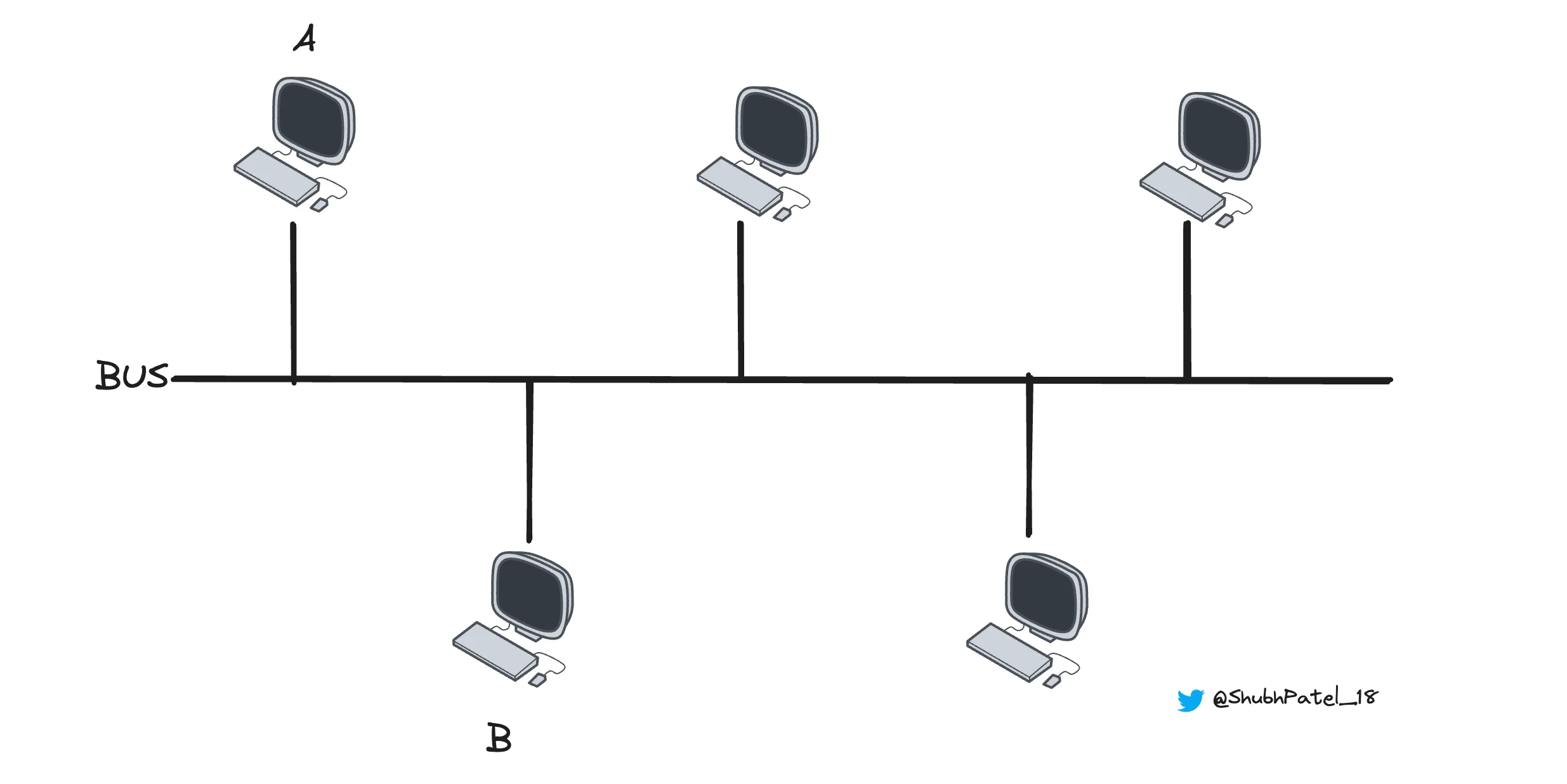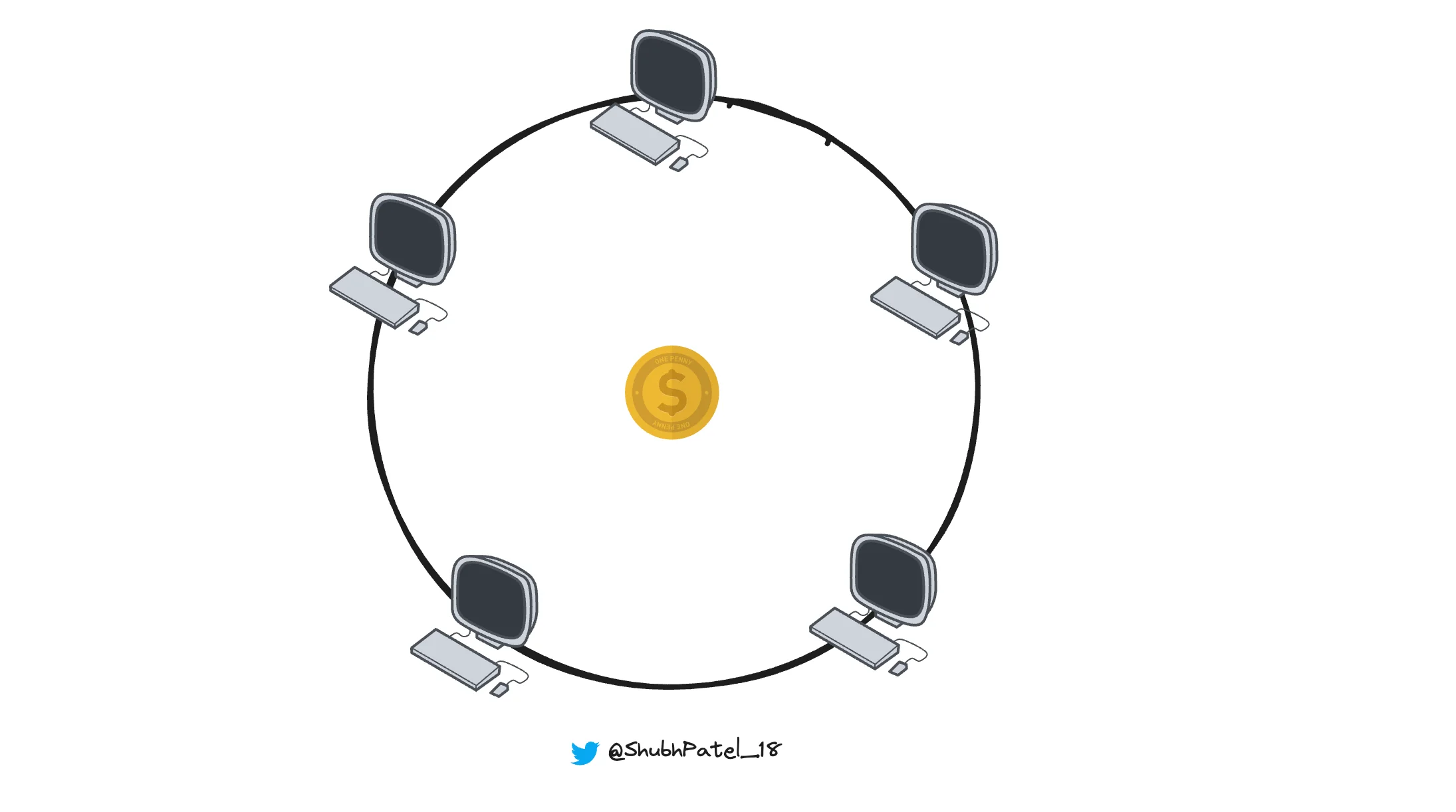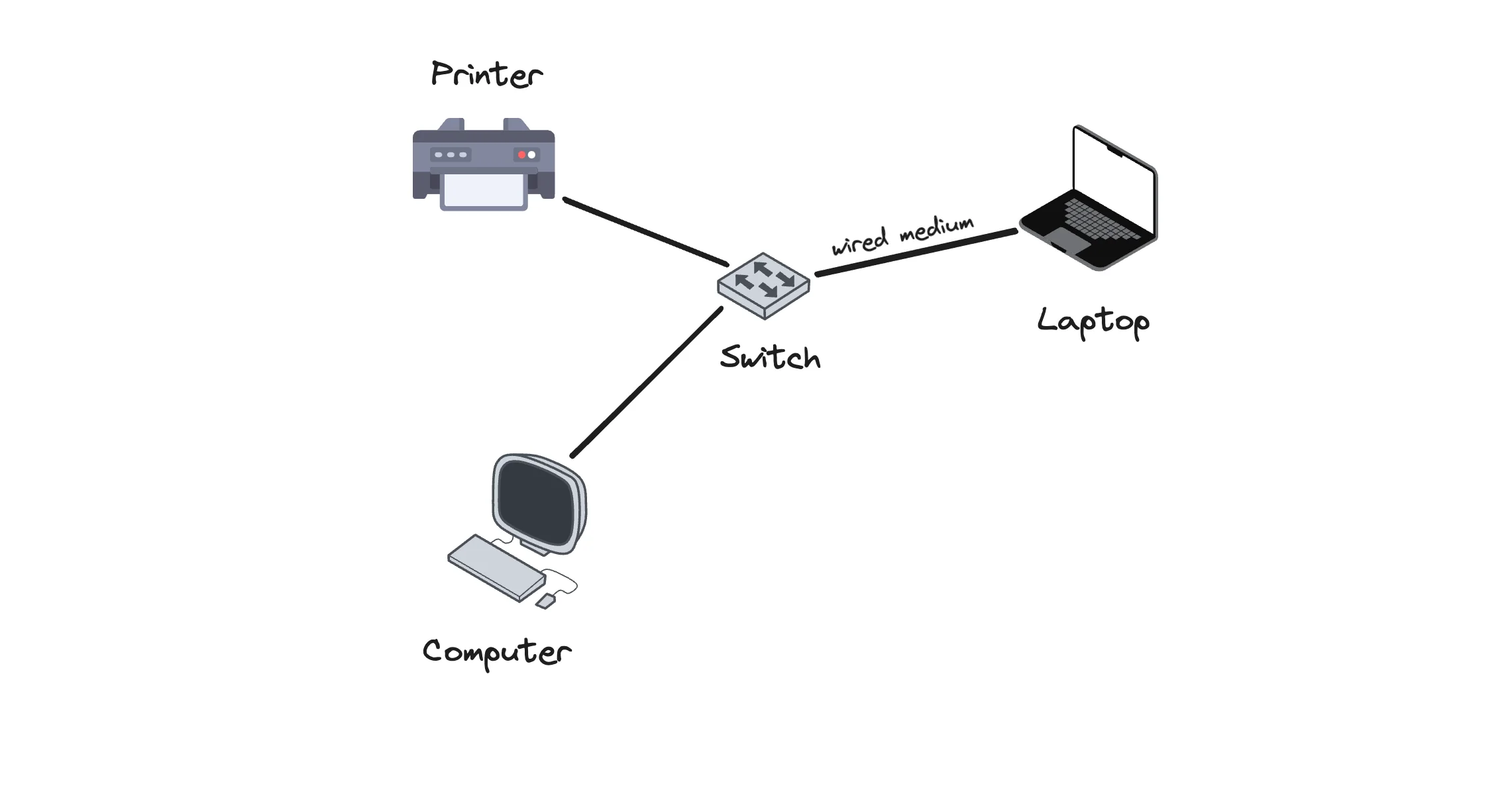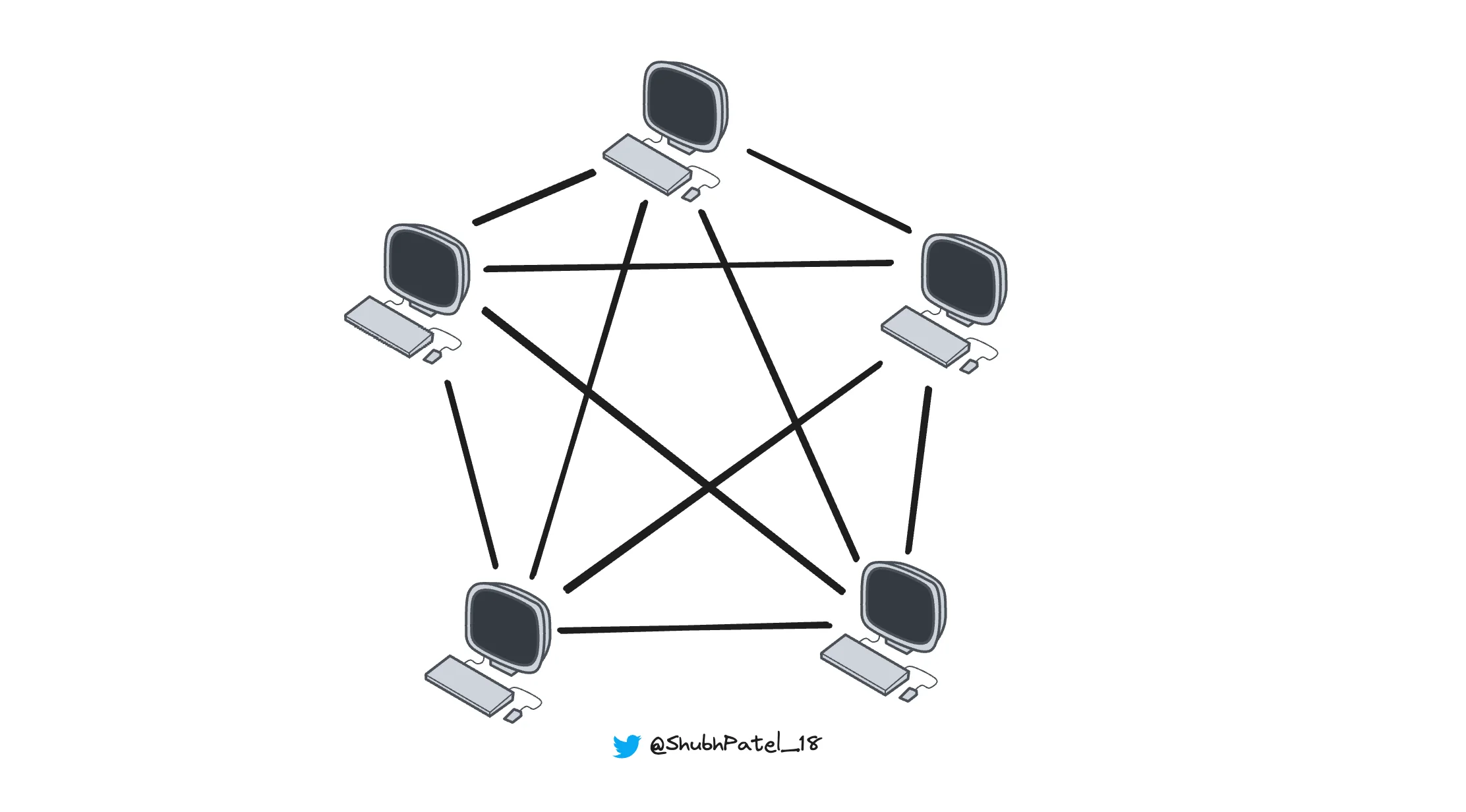Network Topologies
Network topology refers to the arrangement of different nodes (devices) in a computer network. The choice of topology affects the performance and scalability of the network. Let’s explore some common network topologies.
Bus Topology

Bus Topology
In a bus topology, all devices are connected to a single central cable known as the "bus." Each device connects to the bus using a drop cable or tap connector. Data sent by any device travels along the bus in both directions, but only the intended recipient processes the data while others ignore it.
-
If device A wants to send data to device B, it sends the data onto the bus, which travels in both directions until it reaches device B.
-
Devices in a bus topology share the same communication medium, which means data collisions can occur if two devices transmit simultaneously. Collision detection protocols like CSMA/CD (Carrier Sense Multiple Access with Collision Detection) help manage these collisions.
Advantages
-
Simple and inexpensive to set up since it requires minimal cabling.
-
Easy to extend by adding new devices directly to the bus.
Disadvantages
-
A single fault in the main cable can disrupt the entire network.
-
Not suitable for large networks with high data traffic, as collisions can become frequent, degrading performance.
Ring Topology

Ring Topology
In a ring topology, devices are connected in a circular loop, with each device linked to two neighboring devices, forming a closed loop. Data travels around the ring in one direction, passing through each device until it reaches its destination.
-
If device A sends data, it travels through each device in sequence until it reaches device B.
-
Some ring networks use a token-passing protocol, where a special data packet called a token circulates around the ring. Only the device holding the token can send data, preventing data collisions.
Advantages
-
Suitable for networks with a small number of devices and moderate data traffic.
-
Predictable performance due to the orderly data transmission method.
Disadvantages
-
A failure in any device or connection can break the loop, leading to network failure.
-
Unidirectional data flow can make the network slow and inefficient.
Star Topology

Star Topology
In star topology, each device in the network is connected to a central device, such as a hub or switch, using individual cables. These connections resemble the shape of a star.
-
When a device wants to communicate with another device, it sends data to the central device. The central device then forwards the data to the intended recipient.
-
If the central device is a hub, it broadcasts the data to all devices, whereas a switch directs the data only to the specific destination device.
Advantages
-
Easy to set up, manage, and scale. Each device connects directly to the central hub or switch.
-
Better performance compared to bus or ring topologies due to efficient data management.
Disadvantages
-
The network’s reliability depends on the central device; if it fails, the entire network becomes inaccessible.
-
Requires more cabling and a central device with multiple ports, which can increase setup costs.
Mesh Topology

Mesh Topology
In a mesh topology, each device is connected directly to every other device, creating a network with multiple paths. These connections can be either wired or wireless.
-
Mesh topology provides high redundancy and fault tolerance. If one link fails, data can be rerouted through alternative paths.
-
Communication between devices can take the shortest and most efficient route, ensuring faster data transmission.
Types of Mesh Topology
-
Full Mesh: Every device is connected to every other device.
-
Partial Mesh: Only some devices are interconnected, while others are not directly connected to every device.
Advantages
-
High fault tolerance and redundancy, ensuring network reliability even if one connection fails.
-
Efficient data transmission with multiple paths available between devices.
Disadvantages
-
Requires a large number of connections, increasing cabling or infrastructure costs.
-
More complex to design and manage, particularly in large-scale networks.